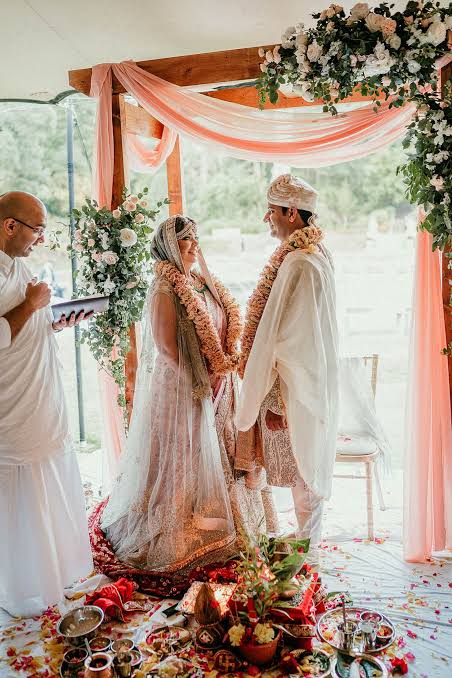In typical Indian weddings, the wedding is divided into three parts: pre-wedding, main, and post-wedding. The pre-wedding includes all the preparations and a party the night before where each side of the family can meet each other and dance and enjoy. A Pandit, who has selected the day of the wedding based on the bride and groom’s horoscopes, conducts a prayer with family members to provide the couple with a happily married life.
The Pre-wedding Rituals
This is the first and introductory part of the wedding. It is a night party that takes place the night before the day of the wedding. The night will involve all the parties involved in the wedding from the groom’s family to the family of the bride. It is a sort of getting together; an opportunity for each family to know each other and most importantly have fun through the night. A Pandit is responsible for selecting the day of the wedding based on the horoscope of the bride and groom. This same Pandit will be saddled with the responsibility of offering prayers for the couple to be.
The Wedding Altar
An alter or mandapa is built the day before the wedding. This is where the mother in law will welcome his son in law. The feet of the son in law is washed by the mother in law before she welcomes him into the mandapa. He will be offered milk and honey. While there; the sister in law will make an attempt to steal the shoes of the groom; if she succeeds; then the groom will be made to pay a fine before he gets his shoes back. There is this superstition about evil spirits; that is the main reason why you will see a typical Indian groom having his turban with a veil of flowers to protect him from the attacks from the evil spirits.
The Vows
In some cultures; the ring is exchanged when making the marriage vows; it is not so in India Hindu marriages. The Mangala Sutra is tied around the neck of the bride. It is a cord with two golden pendants with three knots and it symbolizes a bond between the couple that is to last for a 100 years.
The bride then leaves for the groom’s home where her mother-in-law has placed a vessel filled with rice at the entrance of the home. The bride is supposed to spill the rice by touching it with her right foot to signify wealth and that the bride accepts her new responsibilities.
Another fun game for the newlyweds is called Aeki Beki where a tray of water is mixed with milk and sindoor (vermillion) and it is filled with coins and a ring. Whoever finds the ring four out of seven times will rule the household. The day is then concluded with prayers to God requesting happiness and love for the newlyweds.
The Role Of The Bride’s Parents
The parents give the bride away, but they do not eat before the wedding to remain pure for the occasion. The bride’s saree is tied to the groom’s scarf to symbolize the union of the souls. During a similar ceremony, a cord is tied around the couple’s necks to protect them from evil and they are typically tied by elders of the bride and groom.

